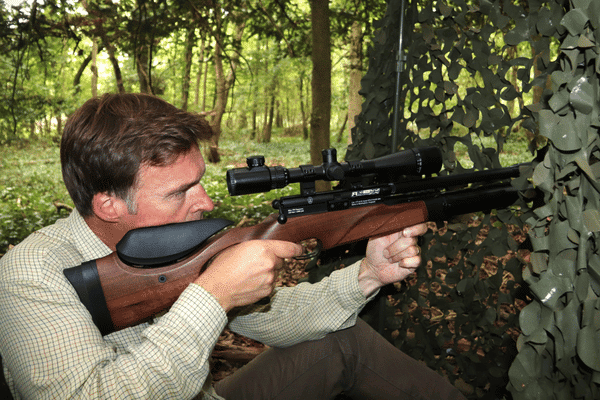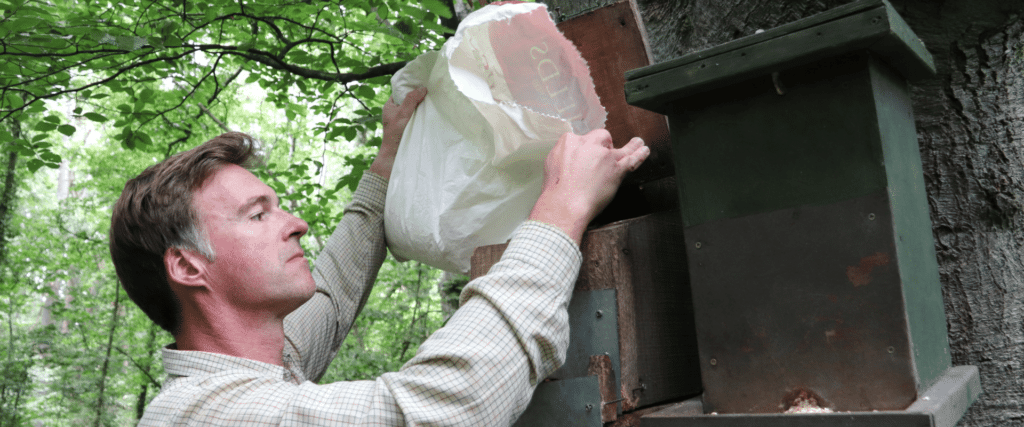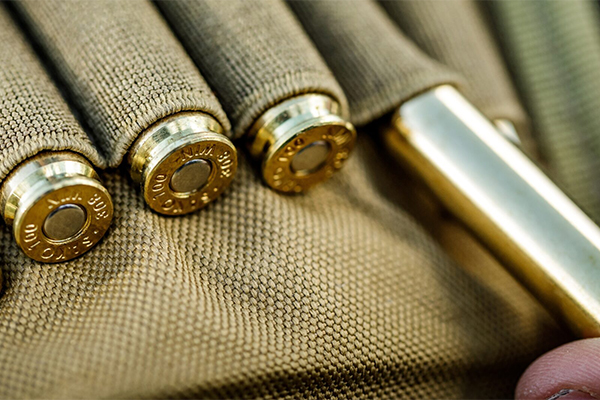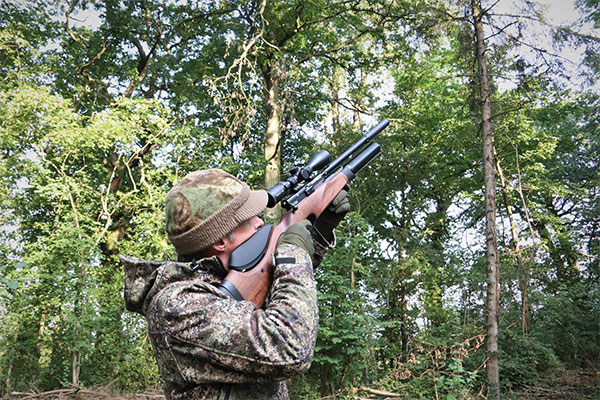
Successful BASC amendments improve Scottish grouse Bill; but snaring ban progresses
MSPs today entered day one of voting on Stage 2 amendments to the Wildlife Management and Muirburn (Scotland) Bill.
Get information on the legal shooting season for mammals and birds in the UK.
Apply for funding for your project or make a donation today
Comprehensive information and advice from our specialist firearms team.
Everything you need to know about shotgun, rifle and airgun ammunition.
Find our up-to-date information, advice and links to government resources.
Everything you need to know on firearms law and licensing.
All the latest news and advice on general licences and how they affect you.


Mat Manning explains how he uses feeding stations to boost his results when using an airgun to control grey squirrels. This article first appeared in the September/October edition of Shooting & Conservation magazine.
Airgun shooters make a significant contribution to efforts to drive down numbers of grey squirrels, but I think many of them, with a little more planning and forethought, could do an even better job of ridding our woodland ecosystems of this invasive pest.
Few people need reminding of the damage done by grey squirrels. These destructive rodents are ruinous to woodland habitat. This is mostly through their habit of stripping the bark from relatively young trees which, if it doesn’t kill them outright, causes them to grow stunted and deformed. The result causes massive financial losses to forestry operations and also compromises biodiversity.
The negative impact that grey squirrels have on our native red squirrel is well-documented – often to the point that it vastly overshadows the harm they cause to other indigenous wildlife. Grey squirrels prey on the eggs and chicks of songbirds and their tendency to monopolise other natural food sources is also harmful to mammals including the endangered dormouse.
Airgun shooters around the UK shoot thousands of grey squirrels every year. Bearing in mind that most of those shooters adopt a very opportunistic approach, roaming the woods for a few hours in the hope of bagging one or two bushy-tails when time permits, I reckon they could account for many, many more by investing a little more time in preparation.
I have been using airguns to control grey squirrels for well over 30 years, and the biggest improvement in my results came about ten years ago when I started using feeding stations. All of a sudden, I was making bags of eight, ten or even a dozen squirrels in just a couple of hours in woods that had previously only yielded three or four to a half-day roving session. Most significantly, my tallies were quickly falling and staying down, which suggested that I was making a meaningful impression on the resident populations of grey squirrels.
The idea of using feeding stations occurred to me while I was pondering the fact that the vast majority of the squirrels I was shooting were encountered around food sources. These included trees heavy with beechmast, acorns or sweet chestnuts and the man-made equivalent: pheasant feeders. It soon dawned on me that I could set up similar ‘honeytrap’ sites of my own.
Peanuts quickly established themselves as by far the most appealing bait. Even when there is an abundance of natural food, squirrels usually struggle to resist peanuts – the only downside is that they are quite expensive. Coarse cut maize is a cheaper, and fairly effective, alternative, and wheat will also pull in grey squirrels – especially in the winter when natural pickings are scarce. If you are competing with other food sources, my advice would be to stick with peanuts. My other piece of advice relating to baits is not to mix different nuts and seeds in the same feeder. Squirrels will simply turf out the less attractive offerings onto the woodland floor in order to get to the tastier morsels.
If you are planning to use wheat to draw in grey squirrels, a pheasant feeder will probably suffice, although I prefer to use a purpose-made hopper and keep it off the ground. My squirrel feeders look like bird boxes with a lid at the top for refilling and a hole at the front through which the feed spills into a shallow tray – you don’t want a high-sided tray because squirrels will be hidden from view if they decide to clamber in to feed.

You can buy very good ready-made feeders online, but you could also make your own – it only requires basic woodwork skills. There are two key points to remember when making your own feed hopper. The first is that it needs to be reinforced (especially around the outlet) to prevent squirrels from chewing it to pieces, which they are particularly inclined to do if you allow it to run empty. The second point to bear in mind is that your hopper needs to be big enough to hold a significant volume of bait – five or six kilos of peanuts. Make your feeder too small and you will constantly be making journeys back and forth to keep it from running empty.
When it comes to siting your feeder, pick a spot where you know squirrels are active. This could be either a place where you frequently see grey squirrels or at least where there are signs of their presence such as dreys. The feeder then needs to be set up where you can get a clear view of it from a hide site about 25 metres away.
Your feeder should be fastened to a tree, high enough off the ground to keep it out of the way of deer but low enough for you to fill it without too much trouble. How you fasten it is between you and the landowner – some will be happy for you to use nails and others will prefer you to use rope. As a former forestry worker, I would urge you to make sure that you remove all nails from any trees when you take your feeder down, as they make for a nasty surprise when encountered by chainsaw operators.
With the feeder in position, I then fill it and leave it undisturbed for four or five days before returning to check on it. All being well, there will be significantly less bait in there when I go back for an inspection. If, after a week, nothing much has taken any interest in my offerings, I will move the feeder to another spot. Otherwise, I will go ahead and build my hide. This doesn’t need to be much more than a simple camo net with a tree behind as a backdrop, because squirrels don’t pay too much attention to what is going on around them when they are distracted by the lure of an easy meal.
My usual approach is to keep the feeder topped up for another week before I start shooting. The comings and goings of squirrels will usually attract more and more, and they will become increasingly bold and competitive as the number of diners rises. Get it right and the first shoot can be quite a haul, with bags of ten or so not unusual. I then keep the feeder topped up and continue to shoot it once or twice a week until my tallies begin to tail off – then I pack up and start the process over again in another part of the woods.
Some people have criticised the use of feeding stations for the control of grey squirrels, claiming that it is unsporting.
I would remind them that the control of grey squirrels is not about sport but the eradication of a very destructive pest. Most significantly, feeding stations ensure clean kills because you will be shooting at a static target over a predetermined distance, which makes precise head shots relatively easy to achieve.
I believe that the use of feeding stations enables airgun shooters to make optimum use of their time and effort when trying to reduce numbers of grey squirrels to the benefit of the woodland ecosystem and the wildlife it supports. If you shoot an airgun and want to drive down numbers of this invasive pest on your patch, I would urge you to give it a try.

MSPs today entered day one of voting on Stage 2 amendments to the Wildlife Management and Muirburn (Scotland) Bill.

Read our answers to frequently asked questions about the planned lead ammunition legislation and what it means for shotgun, rifle and airgun shooters.

Mat Manning shares some simple tips to help you improve your air rifle accuracy.
Sign up to our weekly newsletter and get all the latest updates straight to your inbox.
© 2025 British Association for Shooting and Conservation. Registered Office: Marford Mill, Rossett, Wrexham, LL12 0HL – Registered Society No: 28488R. BASC is a trading name of the British Association for Shooting and Conservation Limited which is authorised and regulated by the Financial Conduct Authority (FCA) under firm reference number 311937.
BASC Direct Ltd is an Introducer Appointed Representative of Agria Pet Insurance Ltd who administer the insurance and is authorised and regulated by the Financial Conduct Authority, Financial Services Register Number 496160. Agria Pet Insurance is registered and incorporated in England and Wales with registered number 04258783. Registered office: First Floor, Blue Leanie, Walton Street, Aylesbury, Buckinghamshire, HP21 7QW. Agria insurance policies are underwritten by Agria Försäkring.
If you have any questions or complaints about your BASC membership insurance cover, please email us. More information about resolving complaints can be found on the FCA website or on the EU ODR platform.